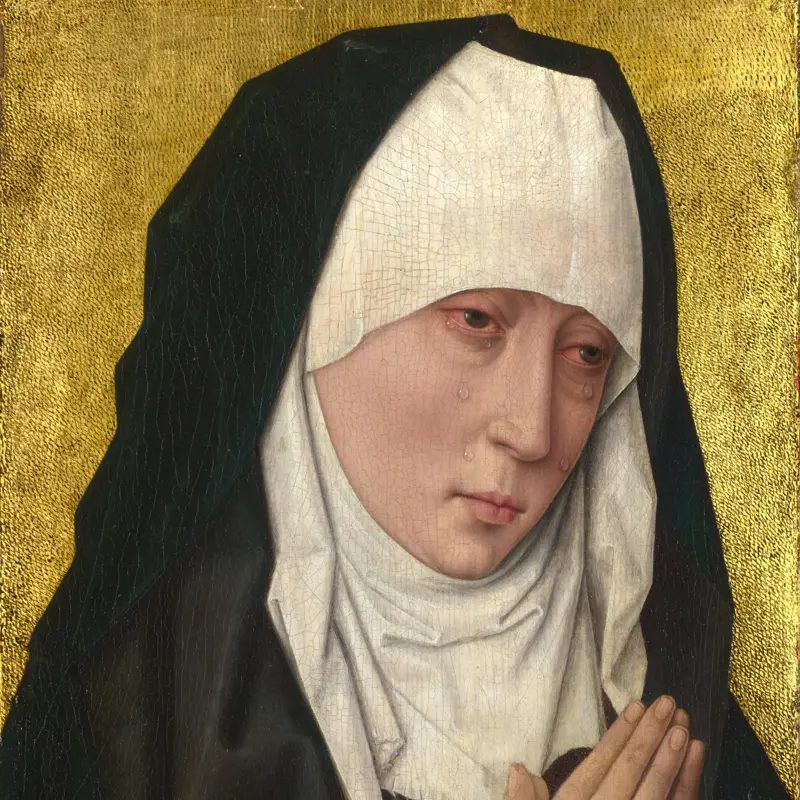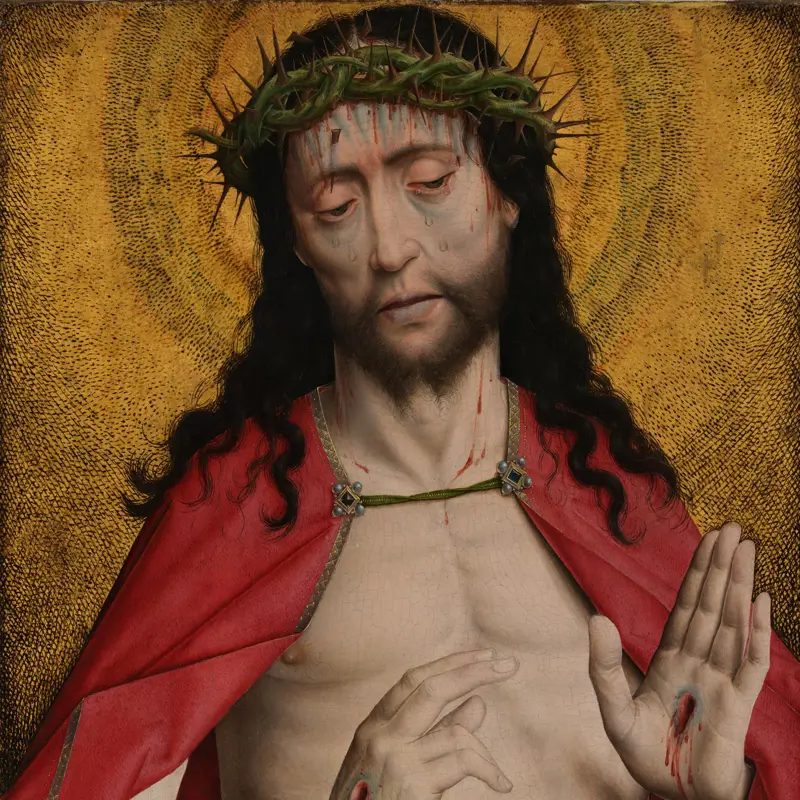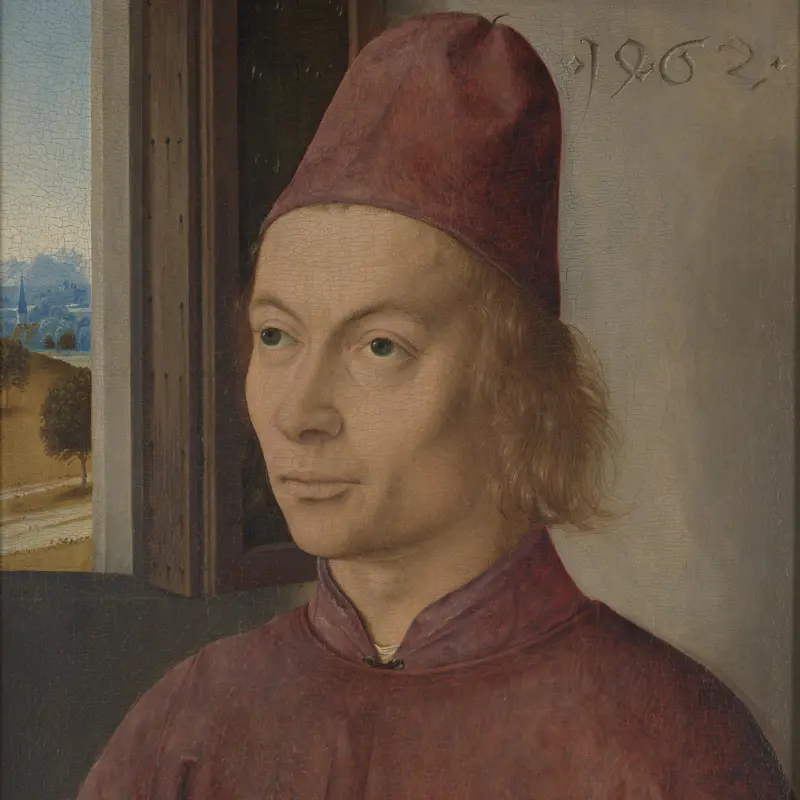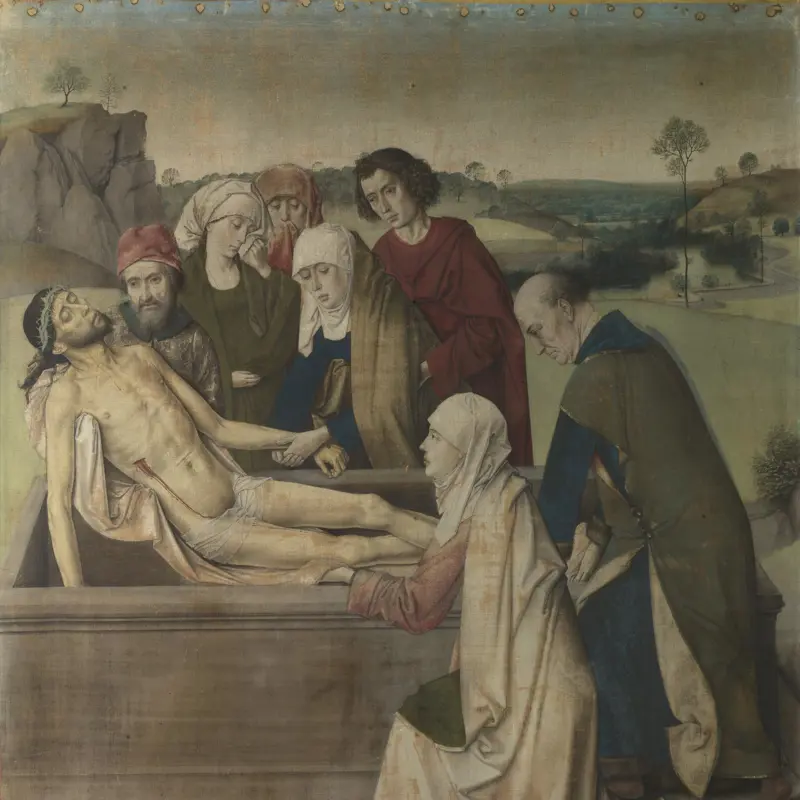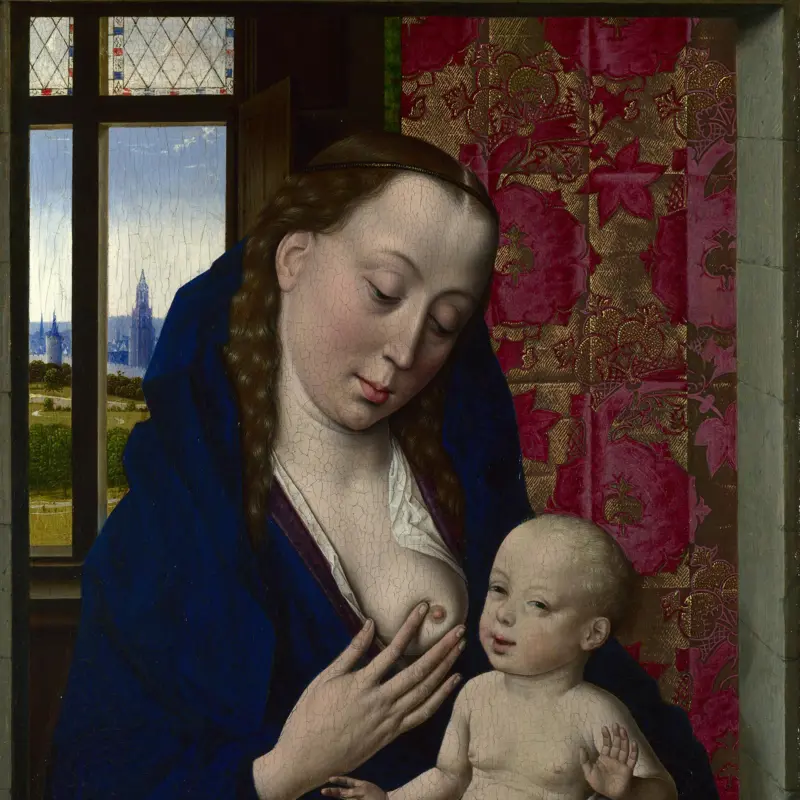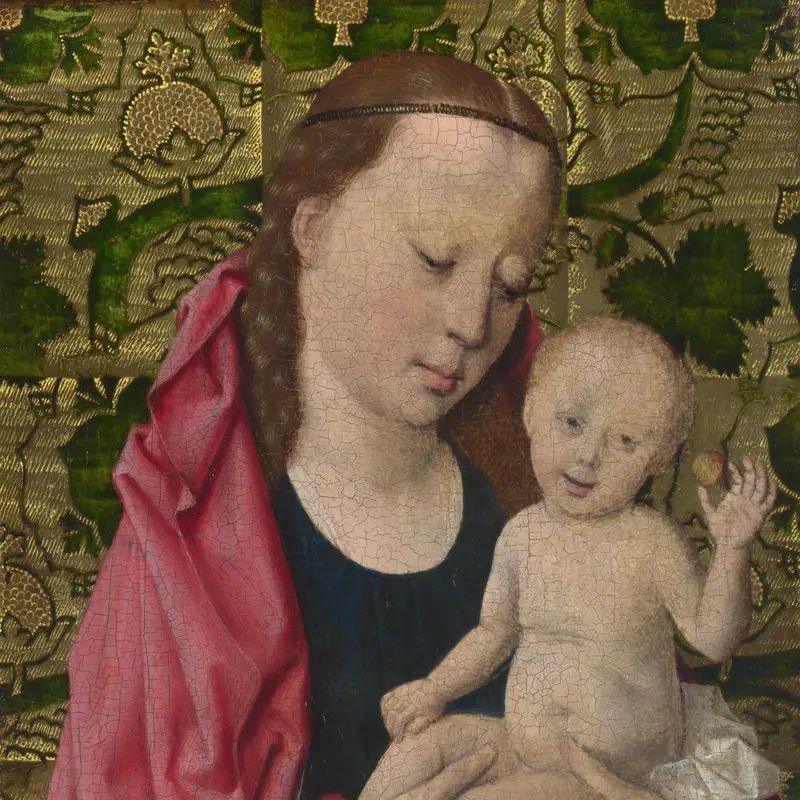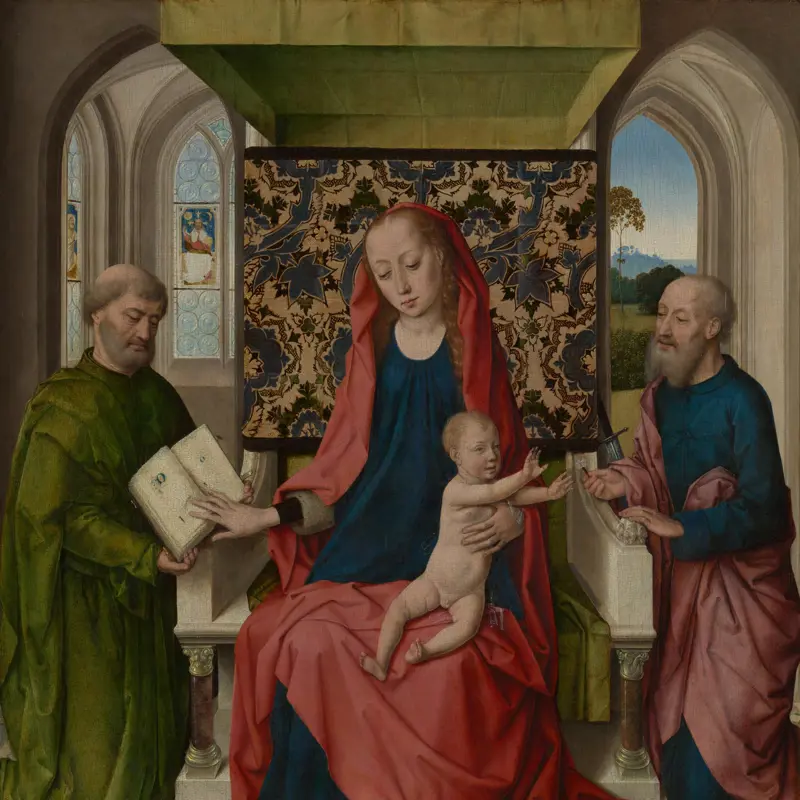Workshop of Dirk Bouts, 'Christ Crowned with Thorns', probably about 1470-5
About the work
Overview
This small picture once made up a diptych (a folding painting in two parts) with another in our collection, the Mater Dolorosa. It was probably intended for private devotion: Christ’s pain was meant to inspire empathy in the viewer, who was encouraged to meditate upon his suffering as a means of personal salvation. This painting might have been made in Bouts’s workshop towards the end of his life.
Key facts
Details
- Full title
- Christ Crowned with Thorns
- Artist
- Workshop of Dirk Bouts
- Artist dates
- 1400? - 1475
- Part of the series
- Diptych: Christ and the Virgin
- Date made
- probably about 1470-5
- Medium and support
- oil on wood
- Dimensions
- 36.8 × 27.8 cm
- Acquisition credit
- Presented by Queen Victoria at the Prince Consort's wish, 1863
- Inventory number
- NG712
- Location
- Not on display
- Collection
- Main Collection
Provenance
Additional information
Text extracted from the ‘Provenance’ section of the catalogue entry in Lorne Campbell, ‘National Gallery Catalogues: The Fifteenth Century Netherlandish Schools’, London 1998; for further information, see the full catalogue entry.
Exhibition history
-
2016Blood & Tears. Albrecht Bouts and the Image of the PassionNational Museum of History and Art Luxembourg7 October 2016 - 12 February 2017Suermondt-Ludwig-Museum8 March 2017 - 11 June 2017
-
2019Making a Masterpiece: Bouts and Beyond, 1450-2020York Art Gallery11 October 2019 - 26 January 2020
Bibliography
-
1945Davies, Martin, National Gallery Catalogues: Early Netherlandish School, London 1945
-
1955Davies, Martin, National Gallery Catalogues: Early Netherlandish School, 2nd edn (revised), London 1955
-
1987Davies, Martin, National Gallery Catalogues: The Early Netherlandish School, 3rd edn, London 1987
-
1998Campbell, Lorne, National Gallery Catalogues: The Fifteenth Century Netherlandish Paintings, London 1998
-
2001
C. Baker and T. Henry, The National Gallery: Complete Illustrated Catalogue, London 2001
About this record
If you know more about this work or have spotted an error, please contact us. Please note that exhibition histories are listed from 2009 onwards. Bibliographies may not be complete; more comprehensive information is available in the National Gallery Library.
Images
About the series: Diptych: Christ and the Virgin
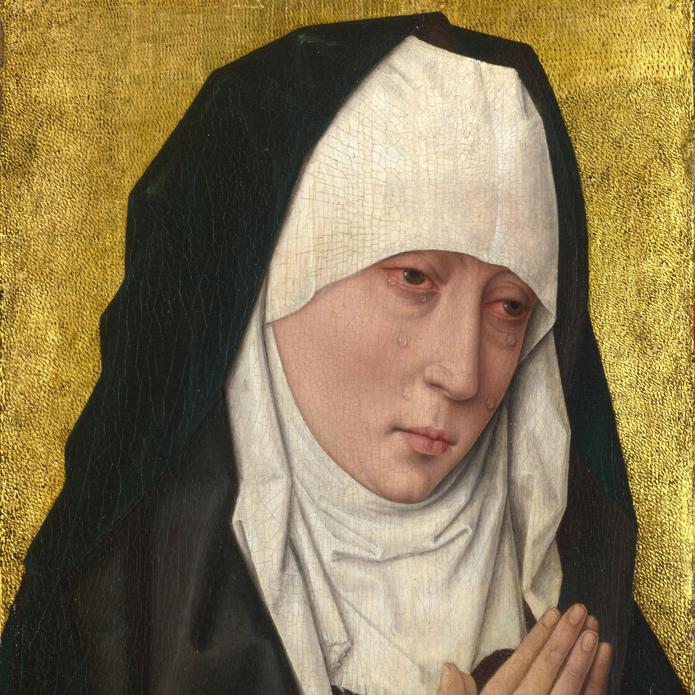
Overview
These two panels were once a diptych (a painting in two parts) showing Christ crowned with thorns and his mother, the Virgin, grieving (known as the Mater Dolorosa). Both the Virgin and Christ are shown close up, almost like portraits. Both are red-eyed and weeping, drawing them together emotionally. The frames (now lost) and figures both seem to cast shadows on the gold backgrounds.
Numerous versions of these paintings survive, most of rather poor quality. A more or less identical diptych (Louvre, Paris) was apparently painted in the same workshop, from tracings of the same pattern drawings.

